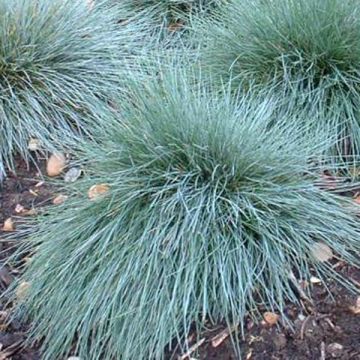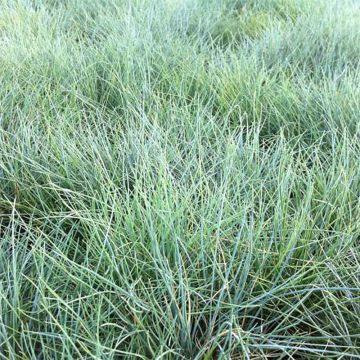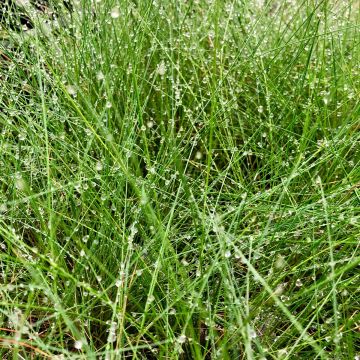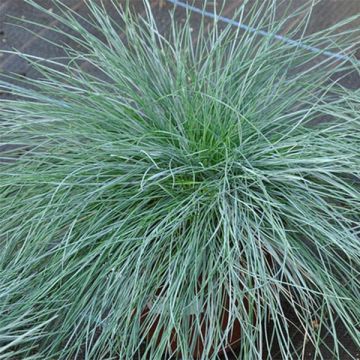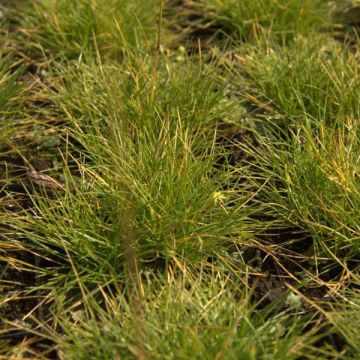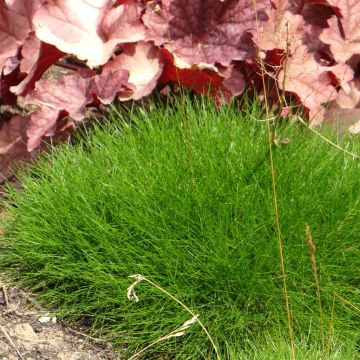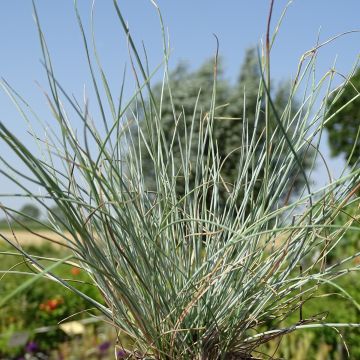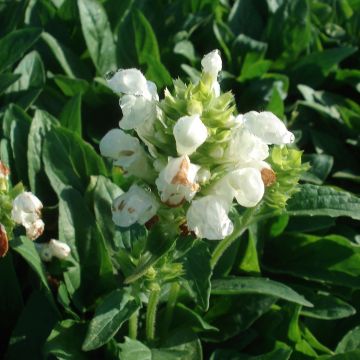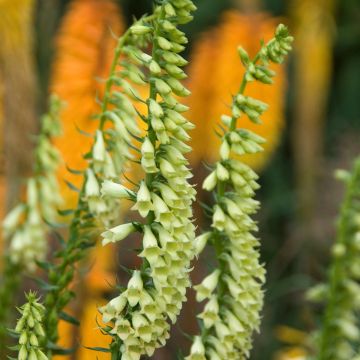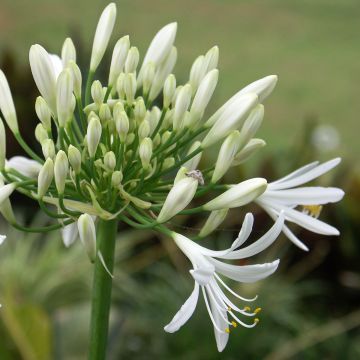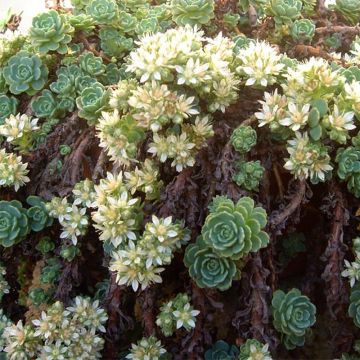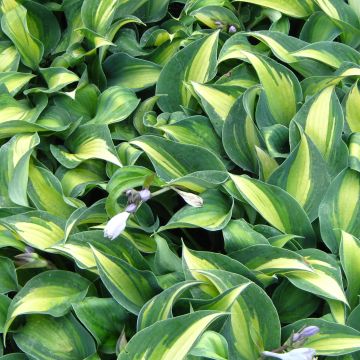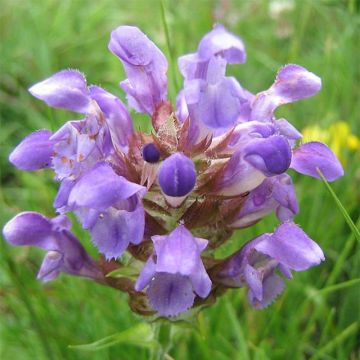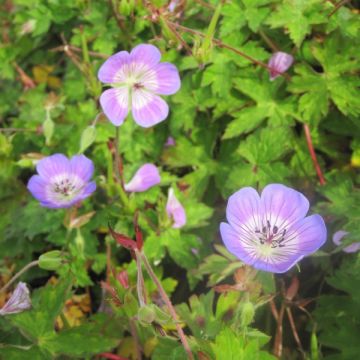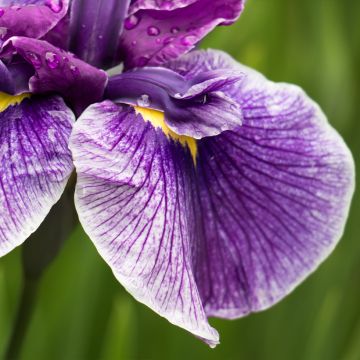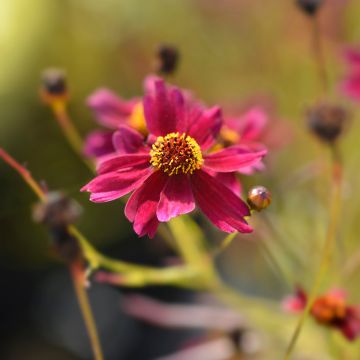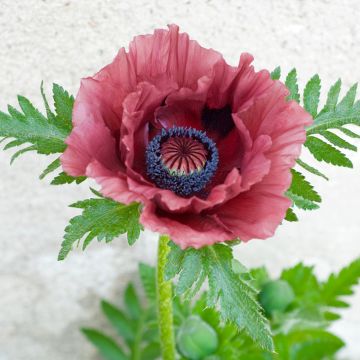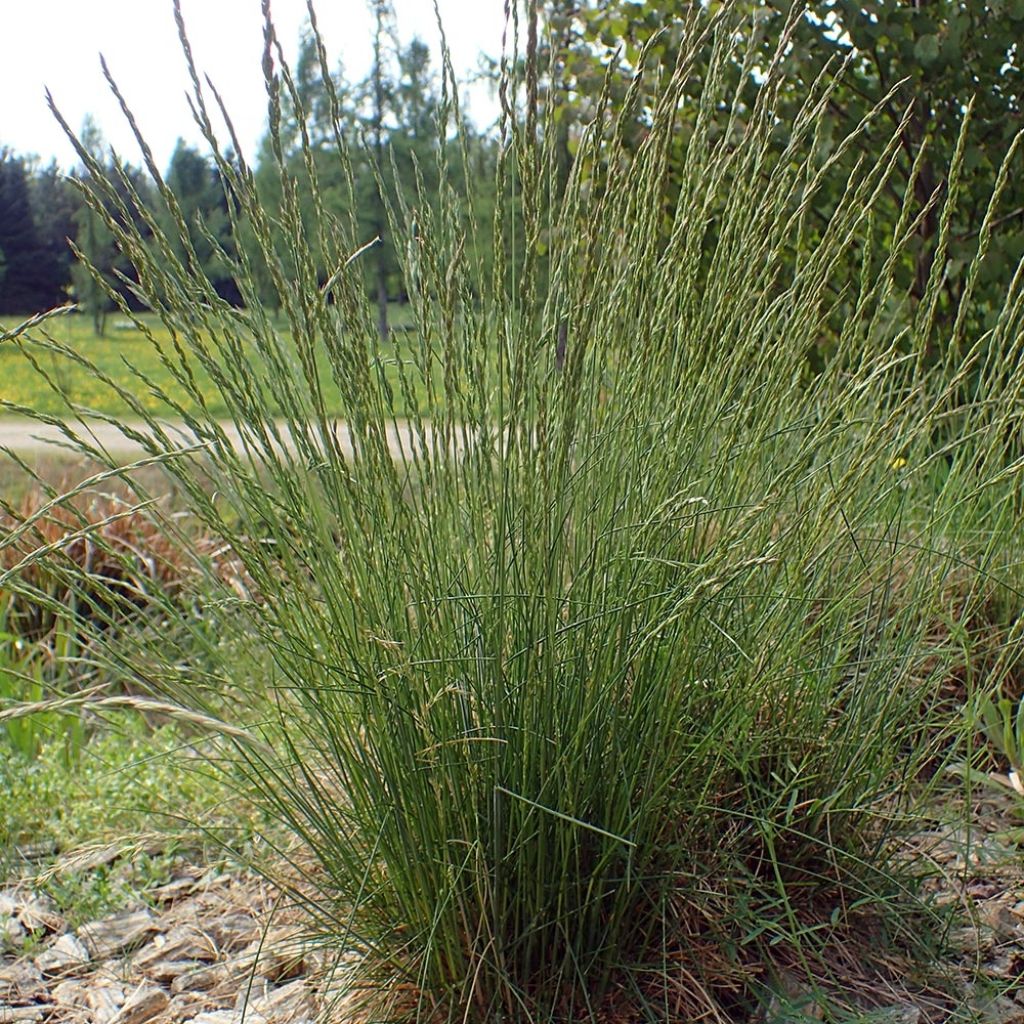

Fétuque des moutons - Festuca ovina
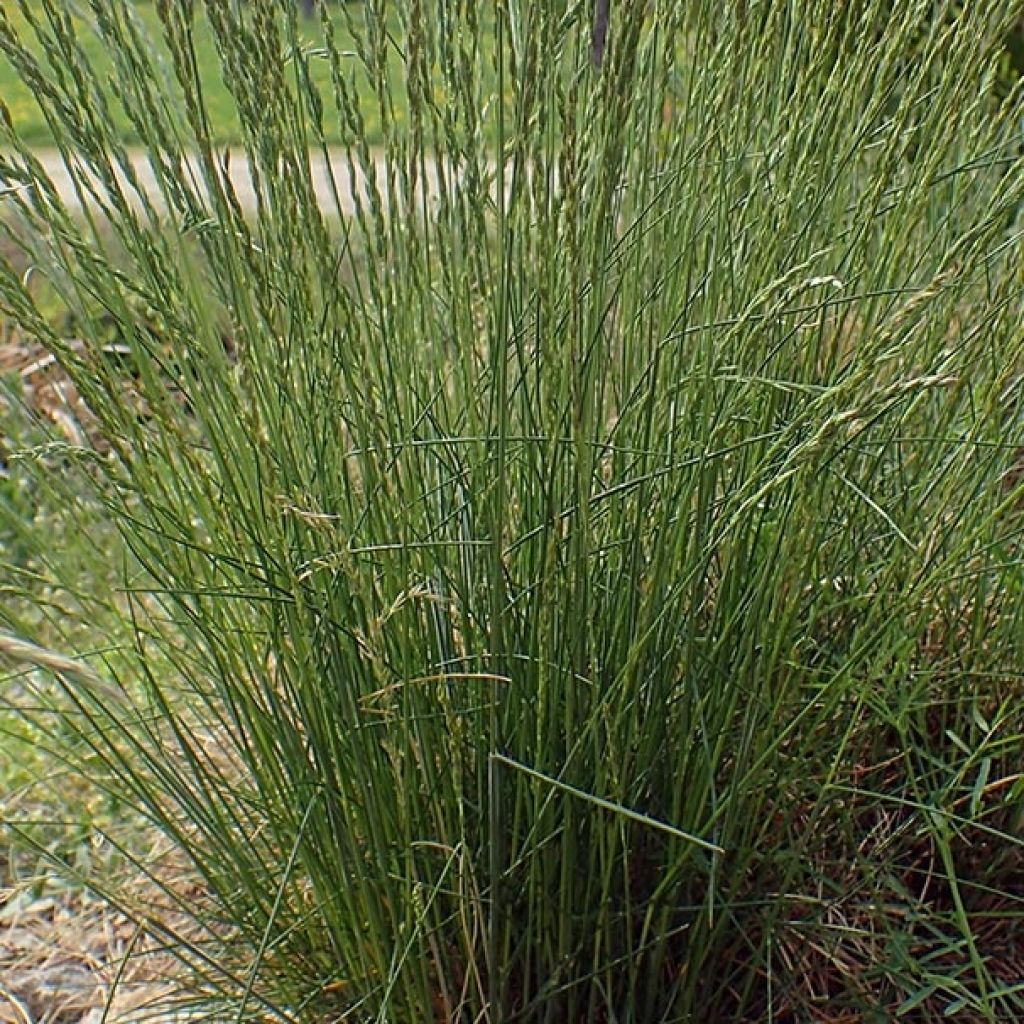

Fétuque des moutons - Festuca ovina
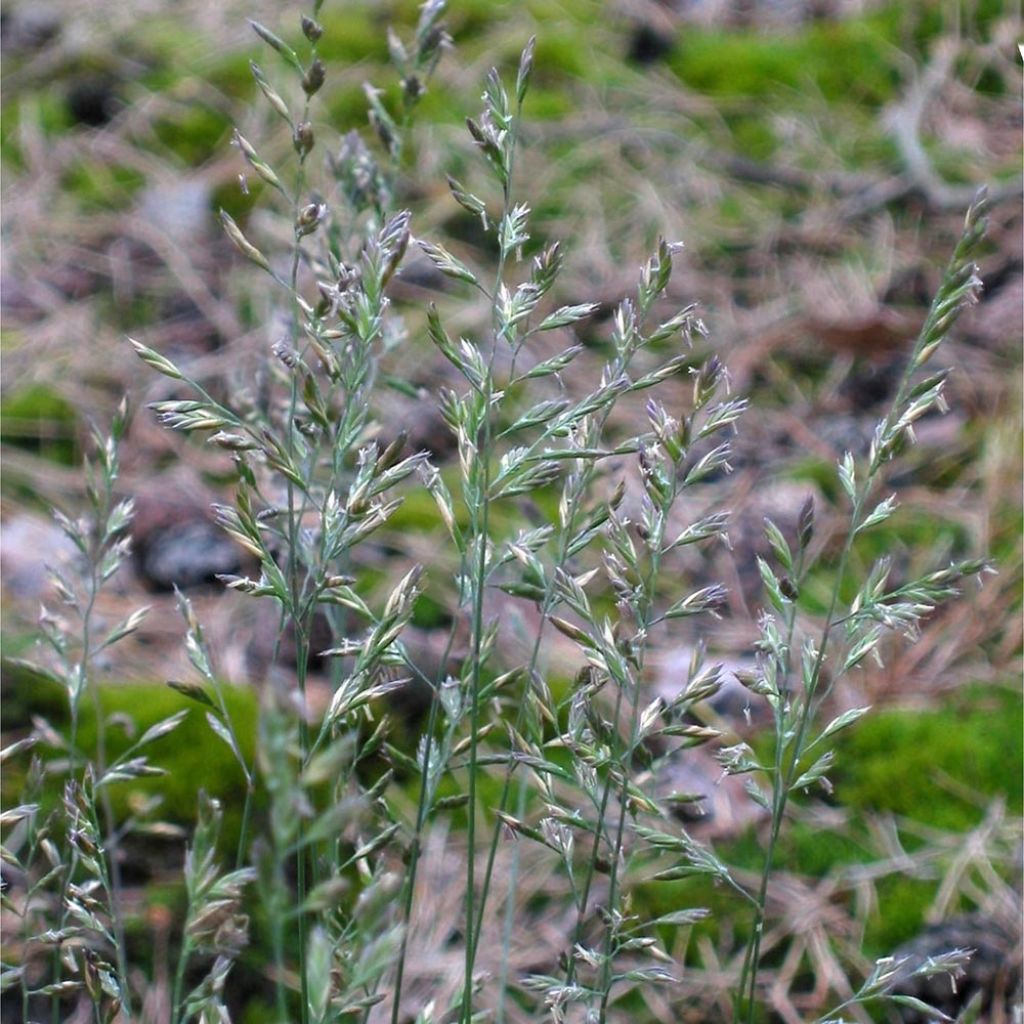

Fétuque des moutons - Festuca ovina
Festuca ovina
Festuca ovina
Sheep's Fescue
This item cannot be shipped to the selected country
Delivery charge from €5.90
More information
Schedule delivery date,
and select date in basket
This plant carries a 12 months recovery warranty
More information
We guarantee the quality of our plants for a full growing cycle, and will replace at our expense any plant that fails to recover under normal climatic and planting conditions.
From €5.90 for pickup delivery and €6.90 for home delivery
Express home delivery from €8.90.
Does this plant fit my garden?
Set up your Plantfit profile →
Description
The Festuca ovina, more commonly known as Sheep's Fescue, is a small grass found in dry and arid areas of our region, often found in mixtures for short grass meadows intended for dry areas. With a modest appearance, in small tufts of upright thin leaves, this species has the double advantage of being resistant to water scarcity and easily self-seeding in light soils. Its foliage, dormant in winter, is not devoid of charm, just like its lively green flower spikes that turn purple when ripe. Very hardy and remarkably simple, this small plant is pretty in rock gardens and valuable for covering the ground in rocky or sandy terrain.
The Festuca ovina is a small herb from the Poaceae family, very common in Europe where it is found growing in poor soils with an acidic tendency, as well as in rocky soils. It is a clump-forming perennial herbaceous plant, non-invasive, with a short lifespan, like many fescues. When mature, it will reach a height of 20-25 cm (8-10in), with a width of 15 cm (6in). Its leaves are long, narrow, upright, thin, villous, and rough to the touch. They are glaucous green in spring and summer, turning straw yellow in winter. Flowering occurs from May to August, depending on the region. It takes the form of inflorescences measuring 5 to 7 cm (2 to 3in), in light panicles, bearing spikelets initially greenish-yellow, turning purplish-brown, and finally straw yellow in autumn. The seeds form in late summer and are dispersed by the wind, ensuring the species' survival in gardens and in nature.
Very hardy, even below -15°C (5°F), Festuca ovina is a perfect plant for dry gardens and areas with poor, sandy, or rocky soil. It can be used as ground cover, replacing lawns in low-traffic areas, in low borders, or even in rock gardens, spaced to punctuate a space or planted en masse to form a thick and dense carpet. It creates lovely contrasts with blue fescues and remains decorative all year round. In a very contemporary style, you can create small scenes by surrounding your clusters of Sheep's Fescue with light or colored gravel, sand, or even volcanic rock. This will also limit the proliferation of invasive plants.
Report an error about the product description
Festuca ovina in pictures
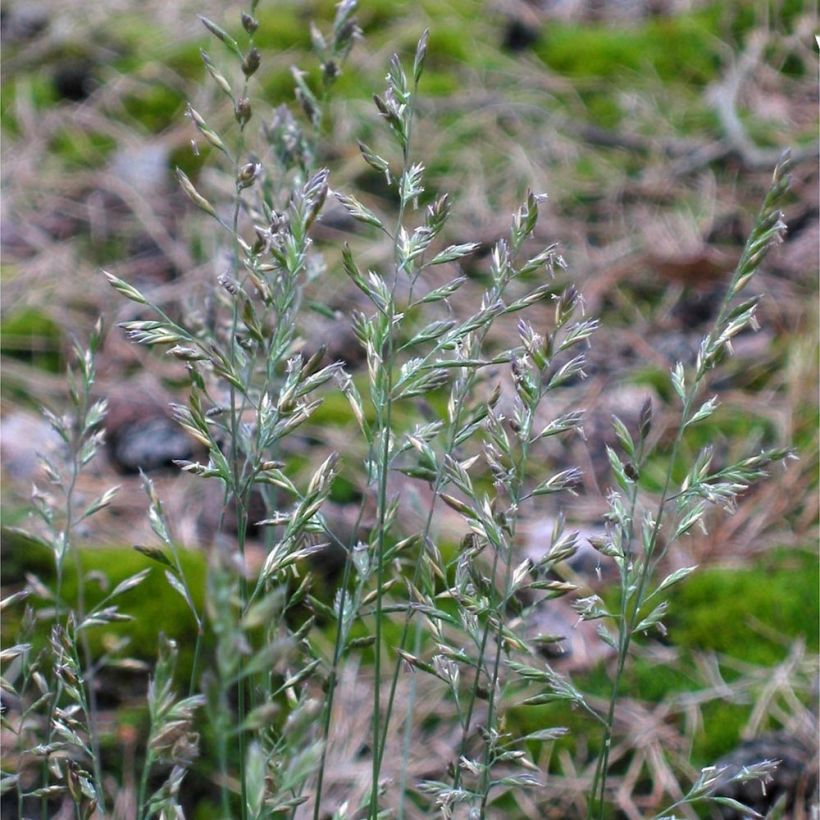

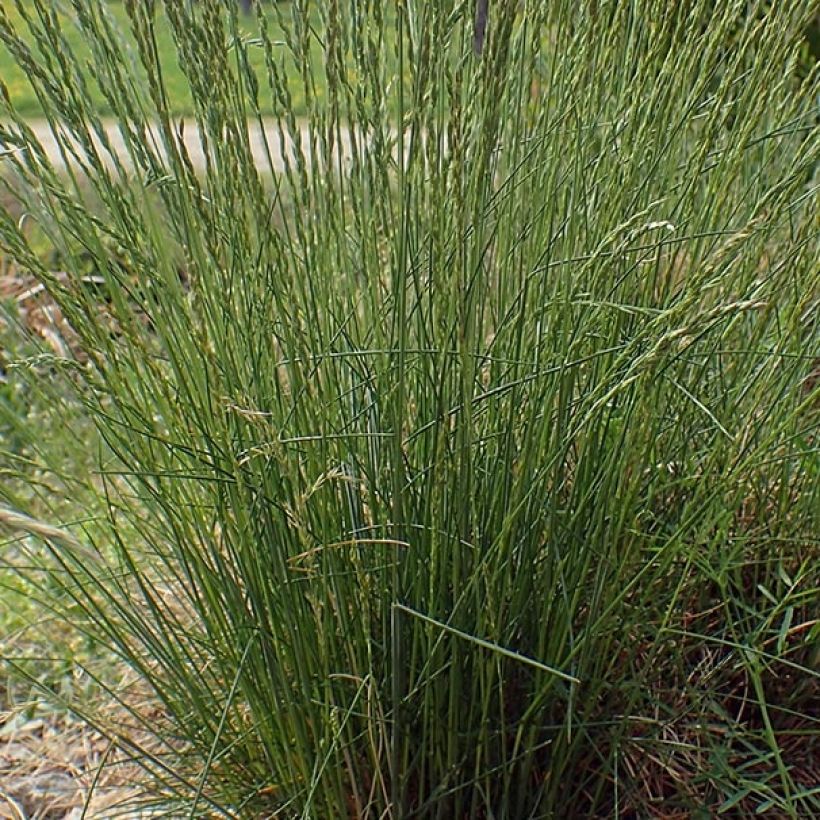

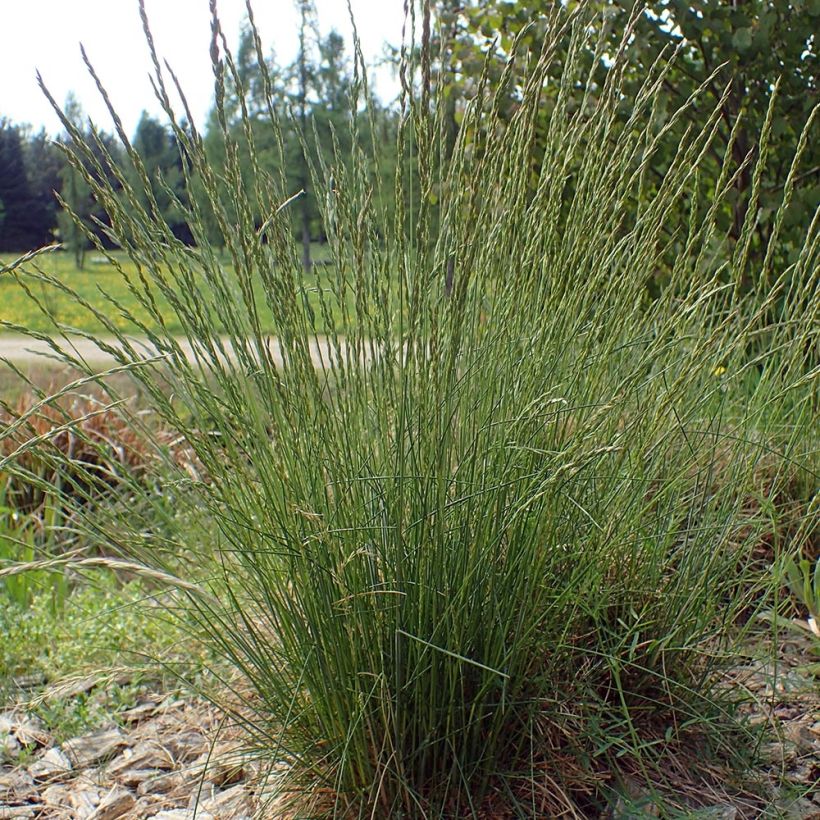

Flowering
Foliage
Plant habit
Safety measures
Botanical data
Festuca
ovina
Poaceae
Sheep's Fescue
Northern Europe
atteinterespiratoire
Cette plante peut entraîner des symptômes allergiques.
Evitez de la planter si vous ou vos proches souffrez de rhinite saisonnière ("rhume des foins").
Davantage d'informations sur https://plantes-risque.info
Other Fescue grass
Planting and care
Plant Festuca ovina in autumn or spring, in sunny, well-drained, light, rather poor, and even rocky or sandy soil, slightly acidic to slightly calcareous. A young plant that thrives easily, and is even more beautiful when it suffers a little, a perennial without problems and without maintenance. The fescues often thin out in the center of the clump. It is advisable to prune them at the end of winter and regularly replant them by dividing the outer part of the clumps to replant them a little further away. The clumps become beautiful from the second year onwards.
Planting period
Intended location
Care
This item has not been reviewed yet - be the first to leave a review about it.
Summer flowering perennials
Haven't found what you were looking for?
Hardiness is the lowest winter temperature a plant can endure without suffering serious damage or even dying. However, hardiness is affected by location (a sheltered area, such as a patio), protection (winter cover) and soil type (hardiness is improved by well-drained soil).

Photo Sharing Terms & Conditions
In order to encourage gardeners to interact and share their experiences, Promesse de fleurs offers various media enabling content to be uploaded onto its Site - in particular via the ‘Photo sharing’ module.
The User agrees to refrain from:
- Posting any content that is illegal, prejudicial, insulting, racist, inciteful to hatred, revisionist, contrary to public decency, that infringes on privacy or on the privacy rights of third parties, in particular the publicity rights of persons and goods, intellectual property rights, or the right to privacy.
- Submitting content on behalf of a third party;
- Impersonate the identity of a third party and/or publish any personal information about a third party;
In general, the User undertakes to refrain from any unethical behaviour.
All Content (in particular text, comments, files, images, photos, videos, creative works, etc.), which may be subject to property or intellectual property rights, image or other private rights, shall remain the property of the User, subject to the limited rights granted by the terms of the licence granted by Promesse de fleurs as stated below. Users are at liberty to publish or not to publish such Content on the Site, notably via the ‘Photo Sharing’ facility, and accept that this Content shall be made public and freely accessible, notably on the Internet.
Users further acknowledge, undertake to have ,and guarantee that they hold all necessary rights and permissions to publish such material on the Site, in particular with regard to the legislation in force pertaining to any privacy, property, intellectual property, image, or contractual rights, or rights of any other nature. By publishing such Content on the Site, Users acknowledge accepting full liability as publishers of the Content within the meaning of the law, and grant Promesse de fleurs, free of charge, an inclusive, worldwide licence for the said Content for the entire duration of its publication, including all reproduction, representation, up/downloading, displaying, performing, transmission, and storage rights.
Users also grant permission for their name to be linked to the Content and accept that this link may not always be made available.
By engaging in posting material, Users consent to their Content becoming automatically accessible on the Internet, in particular on other sites and/or blogs and/or web pages of the Promesse de fleurs site, including in particular social pages and the Promesse de fleurs catalogue.
Users may secure the removal of entrusted content free of charge by issuing a simple request via our contact form.
The flowering period indicated on our website applies to countries and regions located in USDA zone 8 (France, the United Kingdom, Ireland, the Netherlands, etc.)
It will vary according to where you live:
- In zones 9 to 10 (Italy, Spain, Greece, etc.), flowering will occur about 2 to 4 weeks earlier.
- In zones 6 to 7 (Germany, Poland, Slovenia, and lower mountainous regions), flowering will be delayed by 2 to 3 weeks.
- In zone 5 (Central Europe, Scandinavia), blooming will be delayed by 3 to 5 weeks.
In temperate climates, pruning of spring-flowering shrubs (forsythia, spireas, etc.) should be done just after flowering.
Pruning of summer-flowering shrubs (Indian Lilac, Perovskia, etc.) can be done in winter or spring.
In cold regions as well as with frost-sensitive plants, avoid pruning too early when severe frosts may still occur.
The planting period indicated on our website applies to countries and regions located in USDA zone 8 (France, United Kingdom, Ireland, Netherlands).
It will vary according to where you live:
- In Mediterranean zones (Marseille, Madrid, Milan, etc.), autumn and winter are the best planting periods.
- In continental zones (Strasbourg, Munich, Vienna, etc.), delay planting by 2 to 3 weeks in spring and bring it forward by 2 to 4 weeks in autumn.
- In mountainous regions (the Alps, Pyrenees, Carpathians, etc.), it is best to plant in late spring (May-June) or late summer (August-September).
The harvesting period indicated on our website applies to countries and regions in USDA zone 8 (France, England, Ireland, the Netherlands).
In colder areas (Scandinavia, Poland, Austria...) fruit and vegetable harvests are likely to be delayed by 3-4 weeks.
In warmer areas (Italy, Spain, Greece, etc.), harvesting will probably take place earlier, depending on weather conditions.
The sowing periods indicated on our website apply to countries and regions within USDA Zone 8 (France, UK, Ireland, Netherlands).
In colder areas (Scandinavia, Poland, Austria...), delay any outdoor sowing by 3-4 weeks, or sow under glass.
In warmer climes (Italy, Spain, Greece, etc.), bring outdoor sowing forward by a few weeks.

































